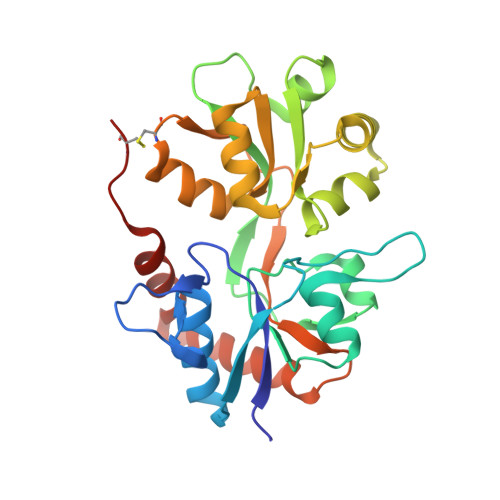Zinc Potentiates GluK3 Glutamate Receptor Function by Stabilizing the Ligand Binding Domain Dimer Interface.
Veran, J., Kumar, J., Pinheiro, P.S., Athane, A., Mayer, M.L., Perrais, D., Mulle, C.(2012) Neuron 76: 565-578
- PubMed: 23141068
- DOI: https://doi.org/10.1016/j.neuron.2012.08.027
- Primary Citation of Related Structures:
3U92, 3U93, 3U94 - PubMed Abstract:
Kainate receptors (KARs) play a key role in the regulation of synaptic networks. Here, we show that zinc, a cation released at a subset of glutamatergic synapses, potentiates glutamate currents mediated by homomeric and heteromeric KARs containing GluK3 at 10-100 μM concentrations, whereas it inhibits other KAR subtypes. Potentiation of GluK3 currents is mainly due to reduced desensitization, as shown by kinetic analysis and desensitization mutants. Crystallographic and mutation analyses revealed that a specific zinc binding site is formed at the base of the ligand binding domain (LBD) dimer interface by a GluK3-specific aspartate (Asp759), together with two conserved residues, His762 and Asp730, the latter located on the partner subunit. In addition, we propose that tetrameric GluK2/GluK3 receptors are likely assembled as pairs of heterodimeric LBDs. Therefore, zinc binding stabilizes the labile GluK3 dimer interface, slows desensitization, and potentiates currents, providing a mechanism for KAR potentiation at glutamatergic synapses.
Organizational Affiliation:
University of Bordeaux, Interdisciplinary Institute for Neuroscience, UMR 5297, 33000 Bordeaux, France.


















